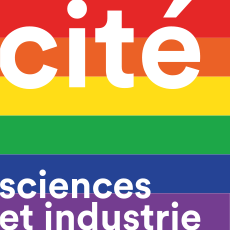Covering three millennia of mathematical history, the Mathematics exhibition is characterised by a desire to make maths more concrete and user-friendly, with a selection of tangible and interactive objects.
It is divided into two sections, Geometry, numbers and movement and Complexity and prediction, located on either side of the "inertia carousel", a room whose rotation allows you to experiment with phenomena related to the Coriolis effect.
1. Geometry, numbers and movement
The first section puts geometry, or rather, geometries in pride of place:
> The geometry of shapes, which looks at immobile objects and only considers the characteristics of position, shape and size, and geometry that considers the properties that persist in spite of distortion.
In this section:
- Pythagoras, a game of water and tanks to check the famous theorem for yourself
- Regular polyhedra
- Proportional slabs
- Areas of the same type
> The geometry of transformations
In this section:
- Rotation of a cube, an interactive experiment on the notion of transformation
- Symmetry: audiovisual presentation on the geometric properties of symmetry
> Non-Euclidean geometry
In this section:
- All maps are wrong: an audio book on the difficulty of projecting a curved surface onto a flat one.
- The world of curves, an audiovisual display on the properties of curved surfaces.
> Analytical geometry
In this section:
- The co-ordinates game: noughts and crosses game introducing three-dimensional space to algebraic locations.
- Tanks and graphics: game on the notion of function where six tanks of the same volume and height are filled at the same time and you have to associate one receptacle's shape with one of six curves indicating the height of the liquid over time.
2. Complexity and prediction
The second section deals with contemporary applications of mathematics in various scientific fields, including social sciences.
The focus is on probability and statistics, in particular:
- Brownian movement: interactive display showing unpredictable movement.
- Galton box: object introducing Gaussian curves through the experimental distribution of 256 marbles.
- Multimedia display on Surveys and statistics that asks visitors to participate in an enquiry, introducing them to statistical tools.
Real world analysis and modelling allow us to simulate the development of situations that are impossible to reproduce or too expensive to try.
In this section:
- Delaunay triangulation
interactive software on one of the geometric algorithms that allows us to produce synthetic landscapes.
In this section:
- Le Chaoteur: interactive clock on the question of sensitivity to initial conditions.
- Turbulent fountain: twelve small pots with holes attached to a mobile wheel pass under a water source, causing the wheel to move in unpredictable ways.
- Fractals, a multimedia display that allows you to visualise the construction of three known fractal curves before creating your own fractal.
Clarifying theoretical research and its continuity over the centuries, three films under the collective title The Spirit of Mathematics are dotted around the exhibition space:
- Demonstration (on the central work on mathematics invented by the Greeks)
- Modelling (on the distinction made by mathematicians between real objects and their mathematical description)
- The mathematicians' village, where researchers talk about their mathematical work, their profession and the community of mathematicians.


